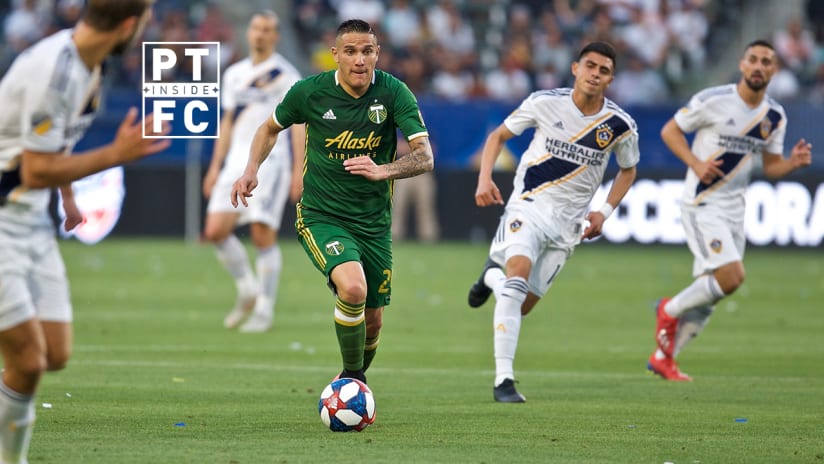Fair or not, there is an undeniable stigma that comes with playing five defenders. Most soccer teams play with four – two centerbacks flanked by fullbacks – and many that add a third in the central defense use more attacking players out wide. Even when head coaches have those attacking intents, though, switching to a five-man defense usually comes with the expectation you’re embracing a more defensive approach.
That’s clearly not always the case. How your lineup plays is just as important as how, on paper, they lineup. While there are very good reasons to wonder if, when teams add a defender, they’re adopting a more conservative approach, the reality on the field is what matters most.
That reality for the Portland Timbers’ is, like most realities, square between the hypotheticals. Having conceded 10 goals in the first three games of their 2019 Major League Soccer season, Portland had every incentive to adopt a more defensive shape, which may explain why the team not only went from two central defenders to three for Sunday’s game at the LA Galaxy but also added a third player to central midfield.

Sebastián Blanco, largely a winger over his two-plus years in Oregon, was deployed in the middle on Sunday, making the team’s two-man, Diego Chara-David Guzmán middle into a midfield trio.
That’s the defending part. The attacking part, however, is where this gets more nuanced. No doubt, sacrificing a player higher up the field is going to impact your attack, but the ways we saw Portland plan around this problem paid off, not only in the team’s only goal but in the improved presence the team was able to maintain on the ball. The transition moments we saw opponents leverage over the season’s first three weeks were non-existent on Sunday, largely because of the balance the team struck between its new defensive and, in attack, moving players so the team’s attacking principles went unchanged.
What, exactly, does all the mean? Let’s try to break it down, on its most-basic levels.
Making central midfielders into wider threats
You can see Guzmán’s positioning (below) on Sunday’s goal as a moment of happenstance, with the Timbers midfielder staying in an advantageous spot as his teammates cycle possession. But the geography central midfielders like him have been occupying in 2019 has been similar from the season’s first kickoff. Even out of the 4-2-3-1 formation, it was common to see one of the team’s two deepest midfielders take up space higher in the set, taking advantage of the attention opponents give to the Blancos and Diego Valeris of the world.
Thus, when you see Guzmán in positions like this one, moments before Sunday’s goal, it’s more than happenstance. This is part of how the team’s attacking approach is trying to move forward, and while the defensive struggles Portland had last month may have blunted that progress, the intent has always been there.
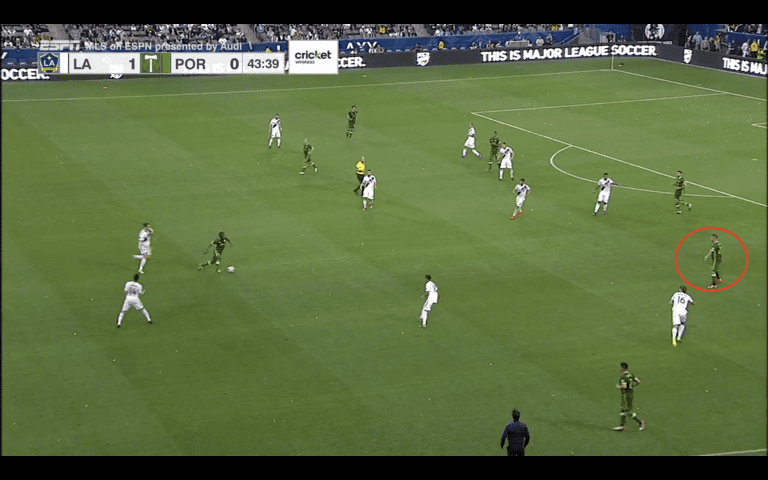
How that intent meshes with the team’s formation change is where things get interesting. When the team is playing a 4-2-3-1 formation, wide players require opponents’ attention at all times, and in particular spaces. Sacrifice those wide players by going to a 5-3-2 (and, by not sending wingbacks forward as quickly as some versions of a 5-back look), and the spaces are going to be different. How do you keep defenses from the luxury of being able to stay compact and narrow?
One way is by making teams account for Guzmán, who in tandem with right wingback Jorge Moreira presents a chance to exploit teams’ left side. Another, though, is happening on the other flank where, in possession, Blanco is breaking from his central midfield position to occupying the attacking space we’re more accustomed to. See where he is, here, immediately after Jeff Attinella rolls a ball out for Chara.
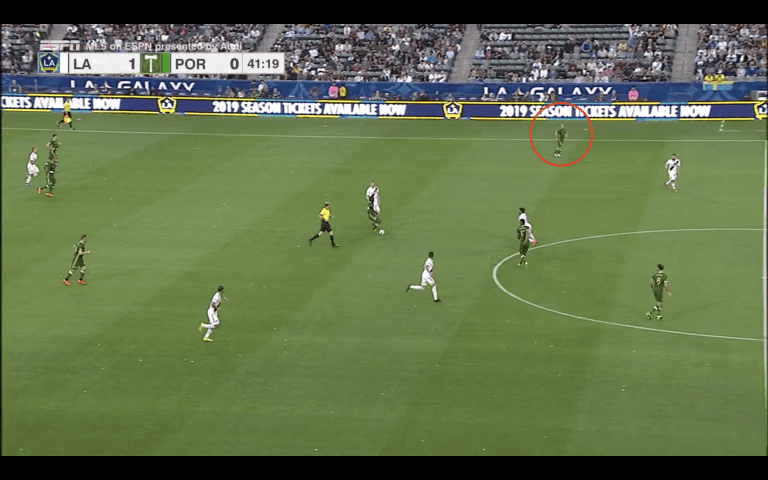
The end result leaves Portland, out of their 5-3-2, looking somewhat similar in attack to what they were doing in the 4-2-3-1. Blanco is a wide-to-in threat from the left. Valeri is patrolling space between the defense and midfield. Guzmán’s getting forward to provide another option, while the team is getting width early from one of their wide defenders. Through the first three games of the season, that defender was left back Jorge Villafaña. On Sunday, it was Moreira, with an extra defender at the back allowing him to be more aggressive going forward.
The biggest sacrifice here isn’t in approach or principles but in timing. The way Portland normally plays, attackers are already in position during the team’s transition phase, allowing for a more seamless move from offense to defense. The season’s first three weeks, though, demanded a solution, one that put a greater emphasis on preventing goals. That doesn’t necessarily change how the team attacks. It does, however, change how the team gets into their attacking shape.
Getting width from a single wingback
One of the things that jumps out about the Timbers’ approach was the new asymmetry. On one flank, the team had Blanco to generate the team’s threats. On the other, the team was relying on numbers with Moreira’s wide threat keeping the defense stretched, leaving room for players like Guzmán and Valeri to operate underneath.
The day’s goal was the best example of this effect, but there were also implications at the other end of the field. They could be seen the 18th minute, when Moreira was in full sprint to get back and defend the far post on a cross from Galaxy fullback Rolf Feltscher, who’d seen Ariel Utuna momentarily open. Moreira prevented the chance from being dangerous, but in other passes LA was able to play between Portland’s right-center back, Julio Cascante, and the advanced Moreira, we saw more of the Timbers’ tradeoff.
Ten of the Galaxy’s open play crosses came from the left side, and while that’s was under 50 percent of their night’s total (29), the location of those crosses is telling. All 10 of those crosses came from within 18 yards of the byline, with LA able to play deep through the channel. On the right side, eight of the team’s 14 crosses that weren’t from corners came from above the 18-yard mark.
Ultimately, that tradeoff was successful, for Portland. The width Moreira provided was a valuable part of the Timbers’ attack, while the chances his positioning allowed at the other end played into the three center-back setup.
For the approach to remain successful, players like Cascante and Bill Tuiloma will have to continue being effective in the air. If they can, though, the Timbers can continue marking their tradeoff.
Using the left wingback to reinforce the middle
What the Timbers are doing with their other wingback, though, is very different. Look at where Zarek Valentin is set up here, when the Timbers have established their attacking shape.
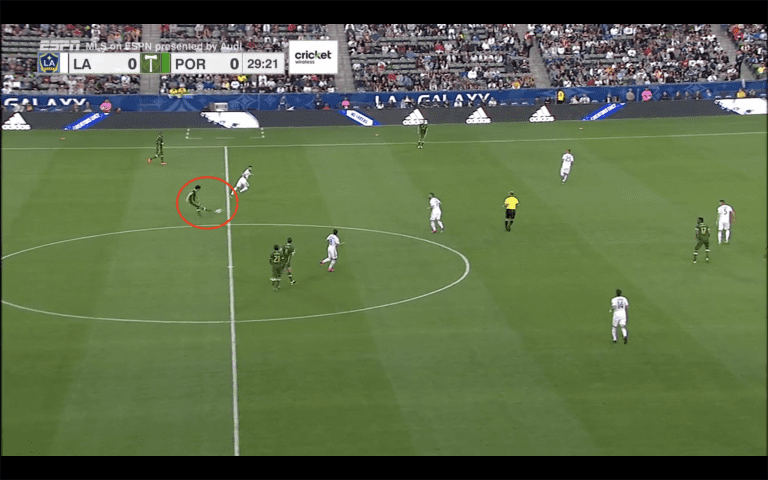
Lest you think that was an isolated example, see where Valentin is here (as well as Blanco) …
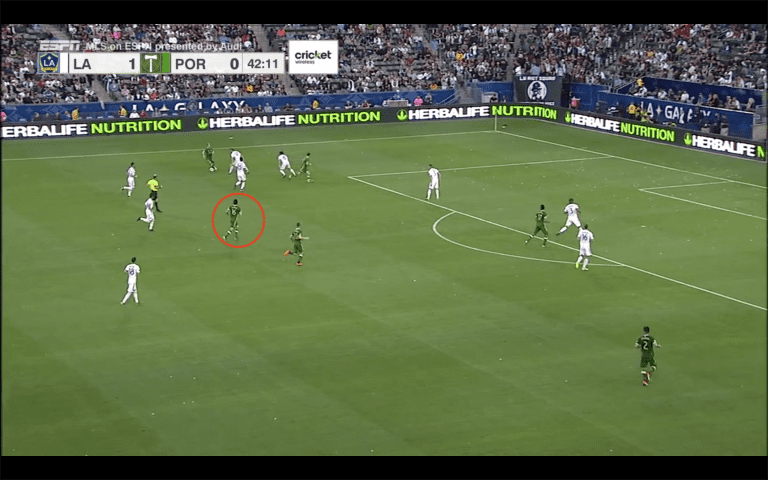
… and here (as well as Guzmán, closer to the top of the image):
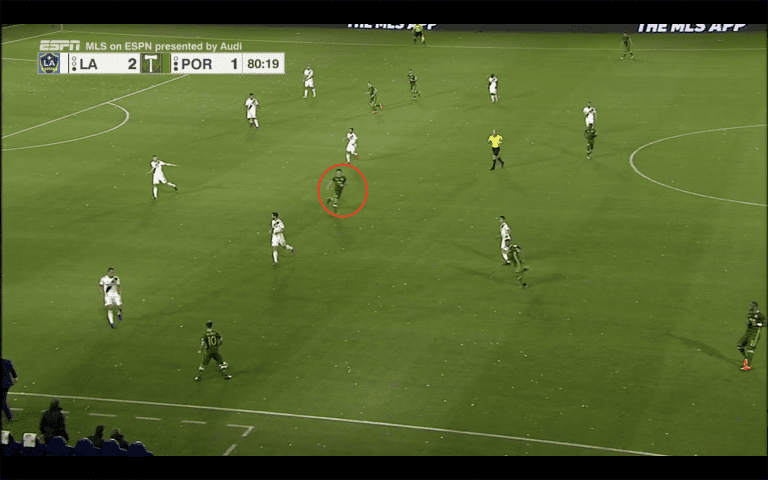
This became the norm, last year, after Valentin established himself as the team’s starting left back, before Villafaña’s return from Mexico. While many lament when a team doesn’t play a typical fullback with a dominant wide foot, this is the reality of modern soccer. Over the last six years (at least), teams shifting fullbacks into central midfield in the attacking and buildup phases have become common. This isn’t a bug. With Valentin’s skillset, it’s a feature.
Valentin’s main assets in attack are his reliable technical quality and his intelligence. He knows where to be, where the play should go next, and he has the skill to execute those visions. While he’s perfectly capable of playing in a cross from wide, too, he’s theoretically more valuable where his biggest strengths can be leveraged. Put him in middle, let him move the ball and, if you have the talents to exploit them, leave the wide spaces to others.
Valentin completed 82.9 percent of his 35 passes on Sunday. Only three Timbers starters – Chara, Moreira and Blanco – were more prolific. Only one starter, Chara, was more efficient. Valentin played zero crosses, only three long balls. Eighteen of his 35 passes were inside the width of the penalty box, making the small connections teams need in the middle of the field.
It’s another example of the 5-3-2 formation being less of an offensive sacrifice than the numbers hint. In attack, Valentin isn’t a wingback. He’s a central midfielder. Guzmán isn’t a holding player. He’s more of an advanced midfielder. Moreira isn’t a defender. He’s an attacker, with 26 of his 49 passes coming in the Galaxy’s half of the field.
Or, to put it visually, when building play out of a 4-2-3-1 formation, Portland’s attacking shape might looks something like this:
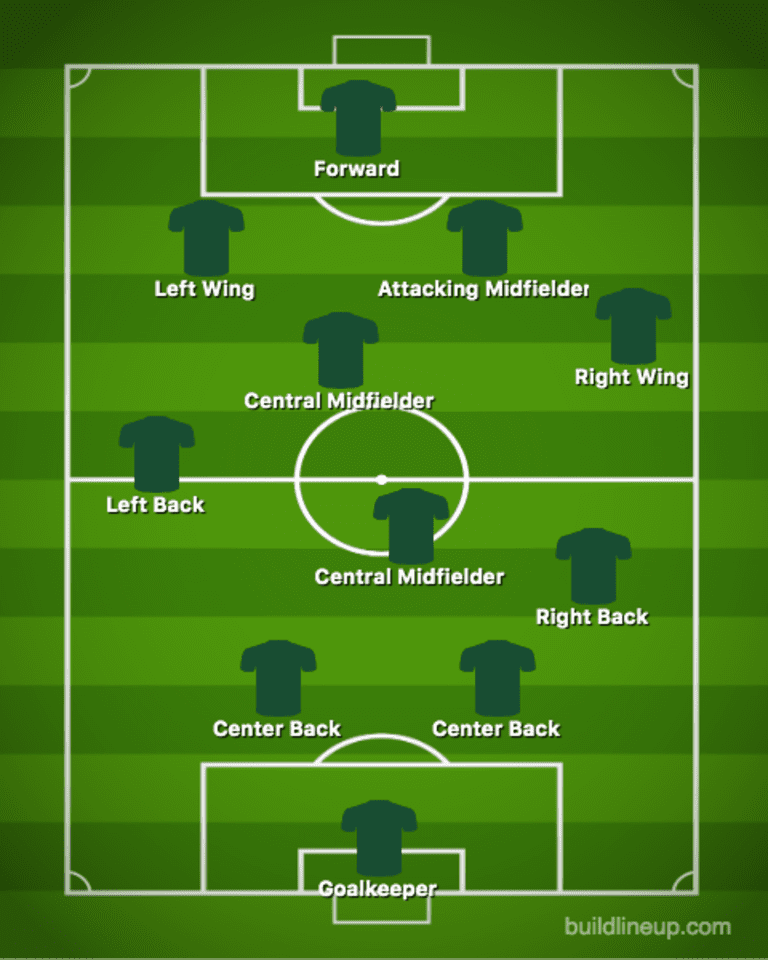
On Sunday, it was closer to this.
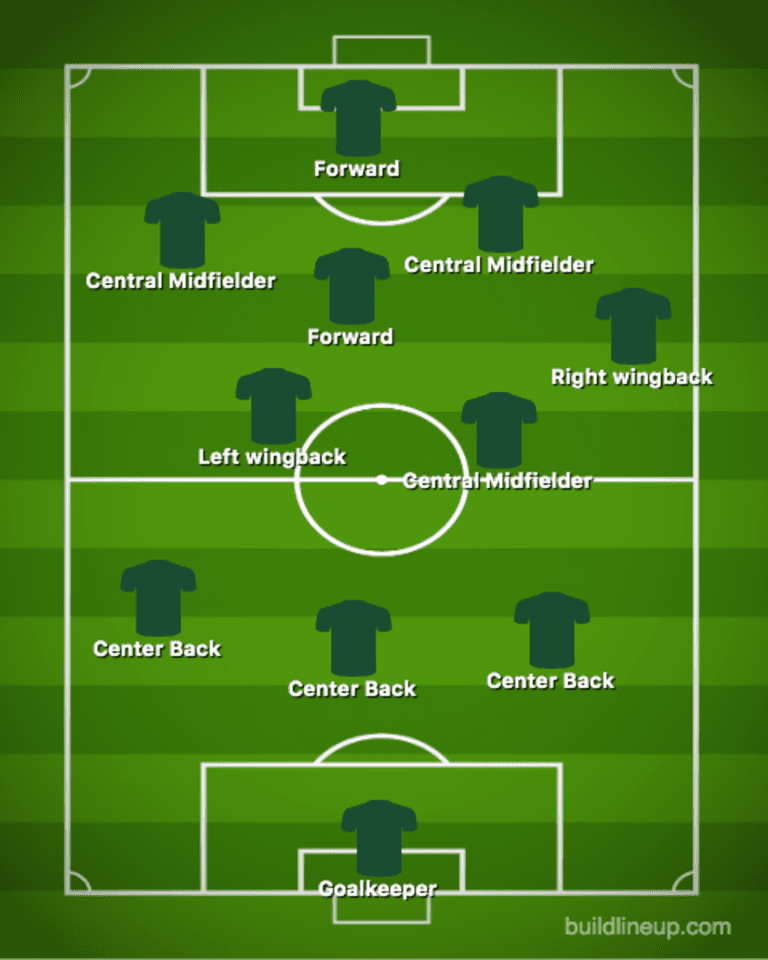
It’s certainly different. One might use the left side more. The spaces for central midfielders to get forward change. Ultimately, though, the sacrifice isn’t in how much you want to attack. It’s in the movements you need to set your shape up.

